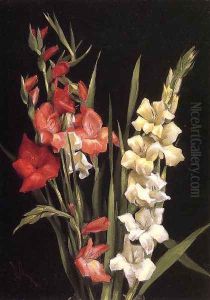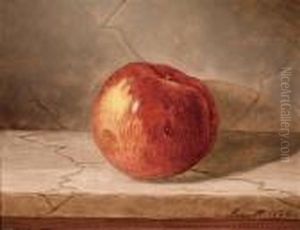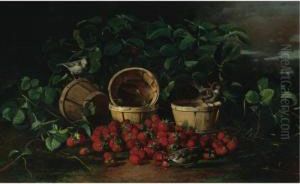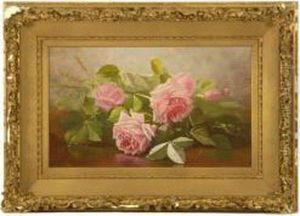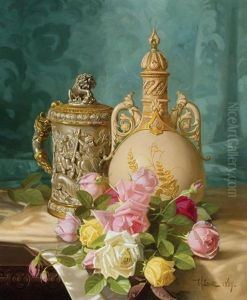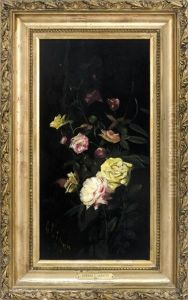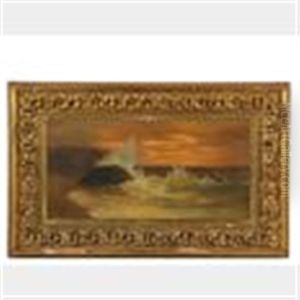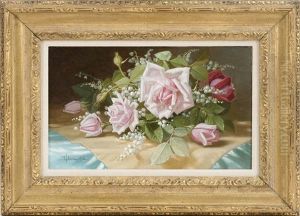Edward Chalmers Leavitt Paintings
Edward Chalmers Leavitt was an American artist known for his still-life paintings, particularly of flowers and fruits. Born on December 31, 1842, in Providence, Rhode Island, Leavitt was part of a prosperous family that supported his artistic inclinations. He developed an interest in painting early on and pursued his passion with determination.
Leavitt's education in the arts included studying under James Morgan Lewin and later with the marine painter William Bradford in Fairhaven, Massachusetts. He also spent time in Europe, where he was influenced by the Dutch masters and their skillful handling of still-life compositions. This European influence is evident in Leavitt's meticulous attention to detail and his emphasis on realism.
Upon returning to the United States, Leavitt established himself as a prominent still-life painter. His work was characterized by elaborate arrangements of flowers and fruits, often set against a dark background to highlight the vibrancy of the colors and the intricate details of each subject. Leavitt's paintings were celebrated for their beauty and technical excellence, and he gained a reputation that led to a demand for his pieces among wealthy patrons and collectors.
Throughout his career, Leavitt exhibited his work at various art institutions, including the Boston Art Club, the Pennsylvania Academy of the Fine Arts, and the National Academy of Design. His paintings were well-received, and he enjoyed the accolades of critics and the public alike.
Edward Chalmers Leavitt passed away on September 28, 1904, but his legacy lives on through his contributions to American still-life painting. His works are part of several museum collections and continue to be admired for their elegance and mastery of the still-life genre.





